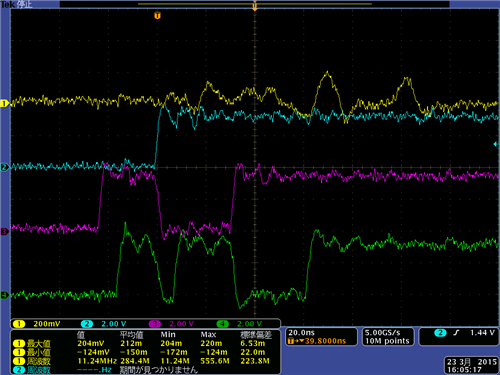Hi,
In case monitoring the output while switching the gain, the following waveform was observed.
CH1:OUTPUT (However, this is not a PGA870 output. through a buffer and gain amplifier)
CH2:B5
CH3:B4
CH4:B3
The CH1 output is not PGA870 output , but even PGA870 output have the same behavior, so, CH1 will have considered equivalent to the output of the PGA870.
In most samples, in this situation, it is not only the half of the peak.
This situation means B5 is high and B4 transitions from Low to High and B3 transitions from High to Low at same time.
This is the other situation is not happening at the moment.
The first place do not stand only about 10nsec from B4 and B3 changes.
will things that should not be this time of data to measure?
In the data sheet, gain settling minimum time is 5nsec, I do not know whether it suffices to see how much the margin.
Input of PGA870 is no input, but I think what you fluctuates how much time you switch the gain as the output of the PGA870 that?
The IN + terminal I have GND connection with 75Ω of resistance to its destination with the capacitor of 0.1uF.
IN- terminal is connected to GND by capacitor of 0.1uF .
Is it possible to monitor the output in real time while switching the gain?
First of all, I would like to that point clear.
Thanks.




